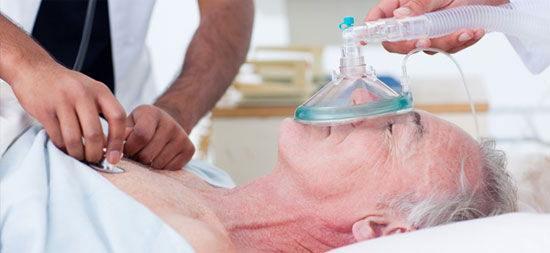Can still revive the dead
A doctor claimed that humans could revive a few hours after they seemed dead. This opens up the hope of saving lives from the hands of death.
Carol Brothers, 63, could not remember the exact moment she died. However, her husband, David, had a clearer memory of that day three months ago, when he opened the door of their house in Wiltshire and saw his wife falling on the floor, breathing violently and facial expressions. quickly became pale, the heart stopped beating.
Fortunately, an elderly neighbor knows the basic principles of emergency cardio-pulmonary resuscitation (CPR) and quickly implements those techniques.

Photo: dammam.sfh.med.sa
Ambulances also appeared soon after. And about 30-45 minutes after Carol's stroke (no one remembered the exact time), Mrs. Carol's heart started beating again.
"During 45 minutes is a long enough time for many people to have lost her forever, we know of some cases where people are still saved from death 3, even 4 - 5 hours after "He died and later went on to live very well," said Dr. Sam Parnia, director of the provincial-level active research department at Stony Brook University.
Most people regard cardiac arrest as death. However, this is not the end of life.
Doctors have long believed that if someone doesn't have a heartbeat for more than 20 minutes, their brain often experiences irreparable damage. But, according to Dr. Parnia, this phenomenon can be prevented by good implementation of CPR technology and careful post-recovery care.
Parnia stressed, it is very important to compress the chest at the right speed with the right force, to help the patient not have a stasis of air. CPR techniques can be implemented with the help of machines. Doctors also have new ways to take care of patients after their hearts start beating again.
As Dr. Parnia explains in his new book entitled "Lazarus effect" (or "Eliminate death" in the US release), after the brain stops receiving regular oxygen supply through the Blood circulation, it has not been annihilated immediately but falls into a state of hibernation - a way to counteract self-decay.
The process of "awakening" such a dormant brain can be the most risky time, because oxygen can potentially be toxic at this stage. Parnia describes this effect as the effect of a tsunami following an earthquake, and the best response is to cool the patient from 37 degrees C to 32 degrees C.
"Cooling therapy is really effective because it slows down the breakdown of brain cells , " Parnia added.
- This method of reviving the dead may be the beginning of the zombie era
- Doctors can 'revive' the brain-dead patient, but only 1 week
- The groundbreaking project studies how to raise the dead
- The real story of the monk revived the dead body
- Revive the dead - Should or should not?
- Cosmic black holes can revive 'zombie' stars
- The city of the dead built right below Jerusalem
- Miracle: Dead 4-hour pig brain is revived
- Can revive the dead?
- Australia built a frozen facility awaiting its resurrection
- ReAnima - The project of reviving the dead has shocked the world
- What do scientists do to revive dinosaurs?
 Green tea cleans teeth better than mouthwash?
Green tea cleans teeth better than mouthwash? Death kiss: This is why you should not let anyone kiss your baby's lips
Death kiss: This is why you should not let anyone kiss your baby's lips What is salmonellosis?
What is salmonellosis? Caution should be exercised when using aloe vera through eating and drinking
Caution should be exercised when using aloe vera through eating and drinking